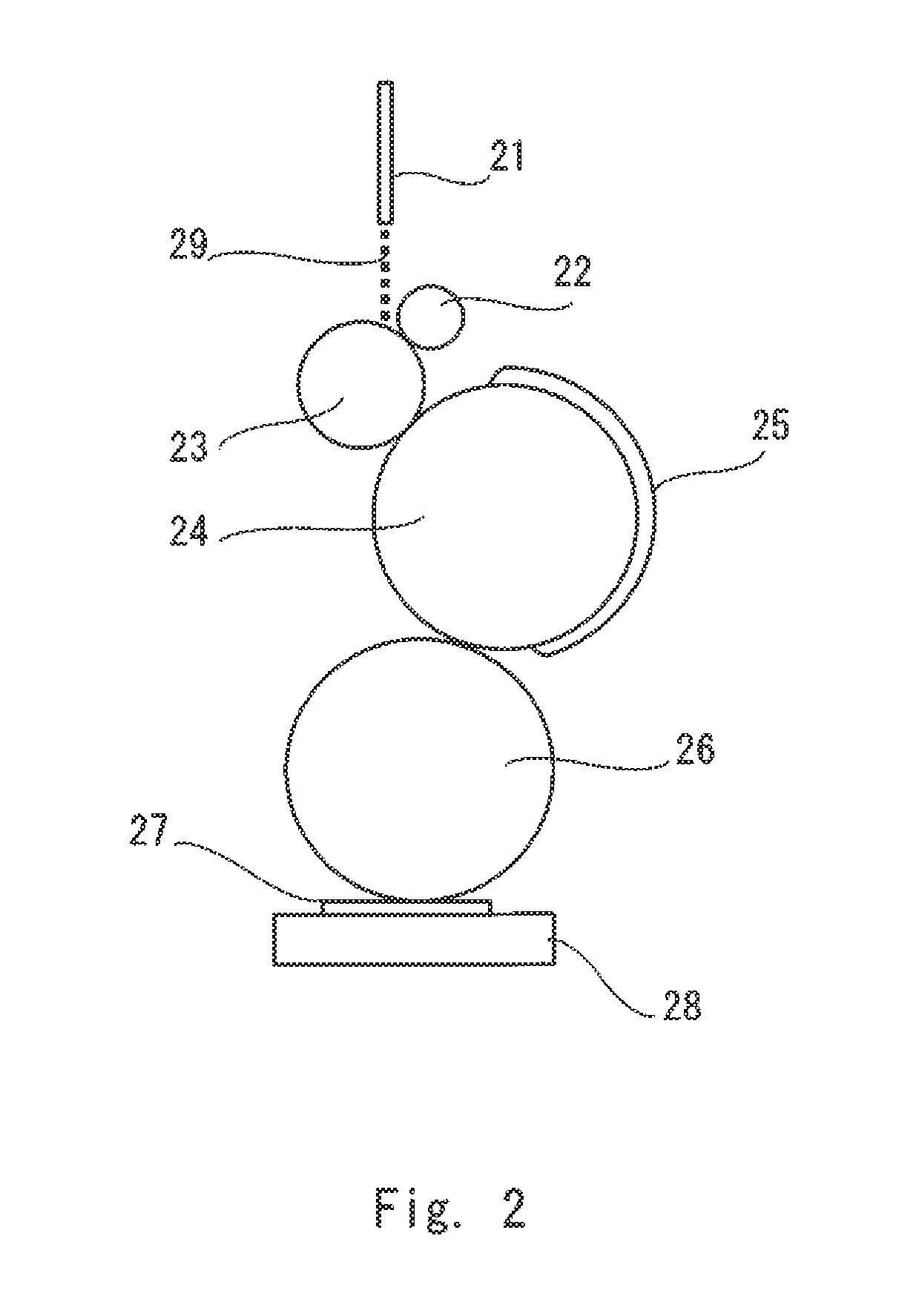Resin composition for light scattering layer, light scattering layer,and organic electroluminescence device
- Summary
- Abstract
- Description
- Claims
- Application Information
AI Technical Summary
Benefits of technology
Problems solved by technology
Method used
Image
Examples
production example 1-1
Process 1:
[0345]In a reaction container including a stirrer, a thermometer, a dropping device, a reflux cooler, and a gas introducing tube, 100 parts of PGMEA (propyleneglycol monomethyl ether acetate) were introduced as a solvent. A nitrogen gas was injected into this container and heated to 80° C. This temperature was held, and a mixture of 5.0 parts of styrene (St), 15.9 parts of cyclohexyl methacrylate (CHMA), 31.7 parts of methacrylic acid (MAA), and 3.0 parts of 2,2′-azobisisobutyronitrile was dropped for one hour and was subjected to polymerization reaction. After completion of dropping, the mixture was further subjected to reaction for three hours at 70° C. After that, a solution obtained by dissolving 0.5 parts of azobisisobutyronitrile into 40 parts of PGMEA was added and continuously stirred at the same temperature for three hours, so that a copolymer was obtained.
Process 2:
[0346]Next, dry air was introduced into the reaction container, and 50.0 parts of glycidyl methacry...
production example 1-11
[0351]Process 1: Production of a dispersant (T1-1)
[0352]In a 4-necked flask including a stirrer, a reflux condenser tube, a dry air inlet tube, and a thermometer, 80.0 parts of biphenyl tetracarboxylic acid dianhydride (manufactured by Mitsubishi Chemical Corporation), 250.0 parts of pentaerythritol triacrylate (manufactured by NIPPON KAYAKU Co., Ltd., Product Name: KAYARAD PET-30), 0.16 parts of hydroquinone (manufactured by Wako Pure Chemical Industries, Ltd.), and 141.2 parts of cyclohexanone were fed and heated to 85° C. Next, 1.65 parts of 1,8-diazabicyclo[5.4.0]-7-undecene (manufactured by Tokyo Chemical Industry Co., Ltd.) were added as a catalyst and stirred for eight hours at 85° C. After that, 77.3 parts of glycidyl methacrylate (manufactured by Dow Chemical Japan Ltd.) and 33.9 parts of cyclohexanone were added, and then, 2.65 parts of dimethylbenzylamine (manufactured by Wako Pure Chemical Industries, Ltd.) were added as a catalyst, were stirred for six hours at 85° C., ...
production example 1-12
[0356]Under an N2 atmosphere, in a mixed solvent of 58 g of methanol and 32 g of water, 4.5 g of methyl methacrylate (manufactured by Wako Pure Chemical Industries, Ltd.), 5 g of trifluoroethyl methacrylate (manufactured by Wako Pure Chemical Industries, Ltd.), and 0.5 g of allyl methacrylate (manufactured by Wako Pure Chemical Industries, Ltd.) were polymerized for eight hours at 60° C. by use of 0.025 g of 2,2′-azobis(2-amidinopropane)dihydrochloride (manufactured by Wako Pure Chemical Industries, Ltd., V-50). After that, 123 g of PGMEA 123 g were added, and methanol and water were removed by stripping. Thus, a light scattering particle dispersion liquid (B1-2) (acrylic resin particle dispersion liquid) was prepared.
[0357]Table 2 shows the composition of the light scattering particle dispersion liquid (B1-2), the dispersion device, the primary particle diameter of particles, the diameter of particles in the dispersion liquid, the content of particles having a particle diameter of ...
PUM
| Property | Measurement | Unit |
|---|---|---|
| Fraction | aaaaa | aaaaa |
| Percent by mass | aaaaa | aaaaa |
| Percent by mass | aaaaa | aaaaa |
Abstract
Description
Claims
Application Information
 Login to View More
Login to View More - R&D
- Intellectual Property
- Life Sciences
- Materials
- Tech Scout
- Unparalleled Data Quality
- Higher Quality Content
- 60% Fewer Hallucinations
Browse by: Latest US Patents, China's latest patents, Technical Efficacy Thesaurus, Application Domain, Technology Topic, Popular Technical Reports.
© 2025 PatSnap. All rights reserved.Legal|Privacy policy|Modern Slavery Act Transparency Statement|Sitemap|About US| Contact US: help@patsnap.com



